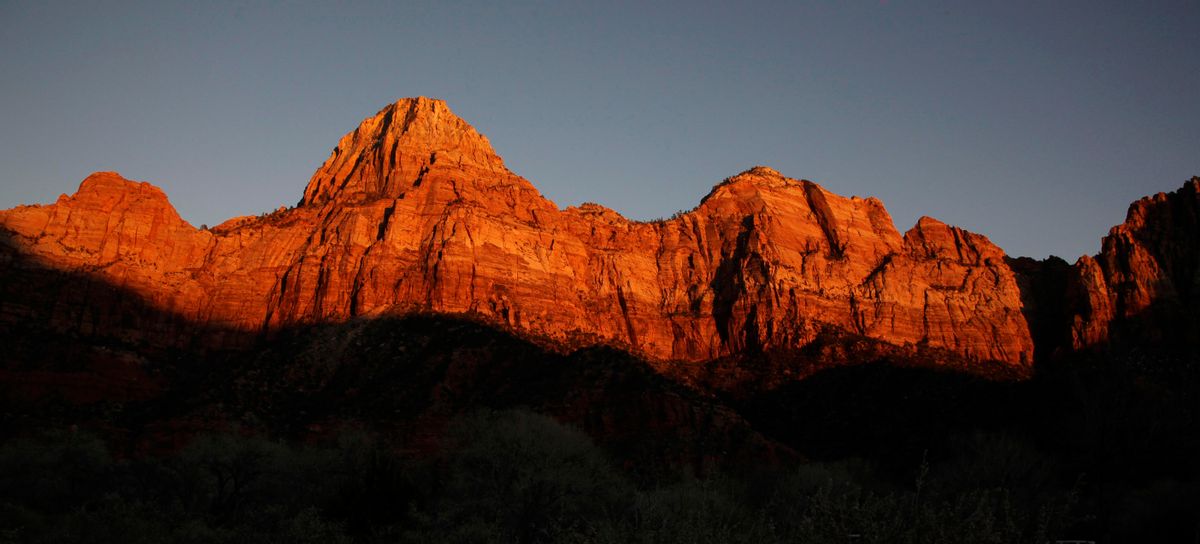Editor’s note: The following is a roundup of archival stories.
Under an order from President Trump, Interior Secretary Ryan Zinke is reviewing the status of 27 national monuments that were designated or expanded by presidents as far back as Jan. 1, 1996, using authority under the Antiquities Act.
Conservation groups and Native American tribes strongly support creating national monuments to protect sensitive lands and public resources from development or exploitation. But other stakeholders, including adjoining communities and businesses that use the areas in question, often view these steps as federal land grabs. The Interior Department received more than 1.2 million public comments on the review.
Zinke has already said he will recommend scaling back Bears Ears National Monument in Utah and has removed three sites in Colorado, Idaho and Washington from the review list. He is scheduled to issue recommendations for the remaining 24 sites by August 24. They could include rescinding some national monument designations or altering boundaries.
Can the Trump administration do that, and what’s at stake? Our experts offer some answers.
The law that started it all
Congress passed the Antiquities Act in 1906 to give presidents power to protect land quickly, without having to get consent from Congress. Initially it was meant to preserve historically valuable archaeological sites in the Southwest that were being looted by “pot hunters” and scavengers.
But as Boise State University public policy scholar John Freemuth observes, presidents soon were using it much more expansively – and affected interests pushed back:
“Use of the Antiquities Act has fueled tensions between the federal government and states over land control – and not just in the Southwest region that the law was originally intended to protect. Communities have opposed creating new monuments for fear of losing revenues from livestock grazing, energy development, or other activities, although such uses have been allowed to continue at many national monuments.”
Freemuth predicts that “future designations will succeed only if federal agencies consult widely in advance with local communities and politicians to confirm that support exists.” One question Zinke is considering is whether there was enough consultation in connection with the monuments on his list.
The value of national monuments
Today national monuments protect many unique resources. As law professors Michelle Bryan and Monte Mills of the University of Montana and Sandra B. Zellmer of the University of Nebraska-Lincoln point out, looting is still a serious threat to prehistoric rock art and ruins in western states.
Monuments such as Bears Ears also protect places where indigenous people have lived, hunted and worshiped for centuries. The Bears Ears designation was requested by an intertribal coalition and approved after extensive consultation with tribal governments.
Many national monuments also protect scenic lands and areas that are critical habitat for endangered species, such as desert tortoises and California condors. In sum, the authors assert, Trump’s order:
“. . . makes no mention of the extraordinary economic, scientific and cultural investments we have made in those monuments over the years. Unless these losses are considered in the calculus, our nation has not truly engaged in a meaningful assessment of the costs of second-guessing our past presidents.”
Ocean mega-monuments
Under the Antiquities Act, monuments are supposed to be as small as possible in order to be consistent with conservation. But when the goal is to protect whole ecosystems, bigger is usually better.
The Papahānaumokuākea Marine National Monument, which was created by President George W. Bush and expanded dramatically by President Barack Obama, is the largest ocean reserve on the planet, covering nearly 600,000 square miles. That’s a huge step forward for protecting marine life, but a massive management challenge, according to Pomona College professor of environmental analysis Char Miller:
“I understand why [President Obama] is moving with dispatch (a mash-up of legacy building and opportunity knocks). But I worry that the speed with which these sites have been designated, and their disparate fiscal demands, has outstripped the executive branch’s capacity to underwrite them. My worry is magnified given the strong opposition in the Republican-controlled House of Representatives to the president’s ready use of the Antiquities Act.”
Can presidents unmake national monuments?
If Zinke recommends abolishing or shrinking some national monuments, can President Trump do it by himself? The Antiquities Act doesn’t say anything on this point.
But when we asked four environmental law experts, their view based on other environmental statutes and legal opinions was that such acts would require congressional approval.
Moreover, they noted, Congress has reversed only 10 national monument designations in more than a century. More frequently, it has opted to give these sites even more protection by promoting them into national parks:
“Congress has converted many monuments into national parks, including Acadia, the Grand Canyon, Arches and Joshua Tree. These four parks alone attracted over 13 million visitors in 2016. The aesthetic, cultural, scientific, spiritual and economic value of preserving them has long exceeded whatever short-term benefit could have been derived without legal protection.”
Jennifer Weeks, Editor, Environment and Energy, The Conversation



Shares